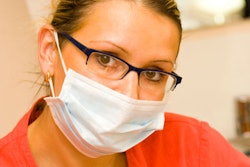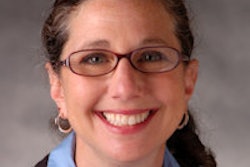
Dentists who read peer-reviewed journals practice less-invasive dentistry than their peers, according to a study presented at the recent American Association for Dental Research (AADR) meeting in Washington, DC. Another study found that women dentists practice less invasively than their male counterparts.
Researchers often express frustration that clinicians don't put the researchers' conclusions to use. Last month's AADR presentations were part of their effort to probe the reasons why.
"We're hoping to change the culture," said Rita Parma, D.D.S., a clinical associate dental professor at the University of Texas Health Science Center at San Antonio.
In a study led by Dr. Parma, researchers surveyed 71 private practice dentists on two questions:
Whether they had adopted or were planning to adopt into their practice research about the use of pit-and-fissure sealants. The dentists split evenly into 35 adopters and 36 nonadopters.
Where they get their information about dentistry.
In March 2008, the ADA Council on Scientific Affairs recommended pit-and-fissure sealants for noncavitated lesions because they are less invasive than conventional restorations (Journal of the American Dental Association, Vol. 139:3, pp. 257-268).
Dr. Parma and her colleagues found that 83% of those who had adopted this new sealant approach cited peer-reviewed journals as a source of information. By contrast, only 25% of nonadopters said they used peer-reviewed journals, a statistically significant difference (p < 0.0001).
In addition, nonadopters seemed to rely more on each other for new information. Of the nonadopters, 40% said they turned to "peers," compared to 19% of adopters (a difference that was not statistically significant, p = 0.07) and another 36% of nonadopters used "study groups," compared to only 14% of adopters (a statistically significant difference, p = 0.0280).
Nonadopters and adopters were statistically equal in their use of the Internet or
continuing education courses for new knowledge, the researchers found.
“We're hoping to change the culture.”
— Rita Parma, D.D.S., University of Texas
Health Science Center at San Antonio
Many dentists never learned how to evaluate evidence for themselves, said James Summitt, D.D.S., M.S., chair of restorative dentistry at the University of Texas Health Science Center at San Antonio. "We were brought up in dental school to respond to direction from teachers, most of whom based what they taught on what they had been taught instead of on evidence," he said. "So I think we were primed to listen to luminaries or authority figures."
Dr. Parma said the school is trying to prevent that problem in the next generation of dentists. "We have a course on using PubMed [the U.S. National Library of Medicine] and understanding levels of evidence," she said. "We're holding debates about the evidence. It's fun."
Students are even invited to challenge their professors, she added. "I tell them 80% of what we teach them is going to turn out to be wrong."
Women more conservative
Other factors play a role in influencing clinical decisions as well, researchers from the universities of Florida and Alabama and the Dental Practice-Based Research Network (DPBRN) found.
In a survey of 466 general dentists who were members of the network, they found that women restored interproximal lesions at a significantly later stage of development than men.
"Women always tend to be more conservative," said Jocelyn McClelland, D.D.S., an Alabaster, AL, private practice dentist who participates in the network and presented some of the research at the AADR meeting. "Men tend to jump in."
The researchers found that 34% of female dentists were likely to have recommended an at-home regimen of nonprescription fluoride, compared to 25% of male dentists (a statistically significant difference, p = 0.029).
The difference was even bigger with prescription fluoride use at home: 33% of female dentists recommended it, compared to 21% of male dentists (p = 0.005).
The differences in at-home treatment diminished somewhat when the patients were children. But 86% of male dentists applied fluoride in the office, compared to 78% of women (p = 0.029) in this population.
The researchers found no significant differences in the extent to which the sexes used in-office fluoride in children, dental sealants, or chlorhexidine rinse.
But they also found that women were more likely than men to think that their patients were able and willing to participate in individualized caries prevention programs.
Overall, the pattern indicates that women follow "a greater caries preventive treatment philosophy," Dr. McClelland and her colleagues concluded.
Copyright © 2010 DrBicuspid.com



















